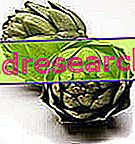See also: Niacin to lower cholesterol
Chemical Structure and Absorption
CHEMICAL STRUCTURE

The term niacin includes pyridyl-β-carboxylic acid (nicotinic acid) and its derivatives that exhibit the biological activity of nicotinamide.
Nicotinic acid is found in plants and nicotinamide is characteristic of animal tissues.
The biologically active forms of niacin are nicotinamide adenine dinucleotide (NAD) and nicotinamide adenine dinucleotide phosphate (NADP) which act as coenzymes.
ABSORPTION OF NIACINA
Dietary NAD and NADP are digested by niacin intestinal mucosa enzymes.
At low concentrations the absorption of niacin occurs by facilitated Na-dependent diffusion, whereas at high concentrations passive diffusion prevails.
All the tissues are able to synthesize the coenzymatic forms NAD and NADP starting from the niacin transported by the blood and transferred to the cells by facilitated diffusion.
90% of niacin taken with food is methylated in the liver and eliminated by the kidneys; the determination of methylated metabolites in the urine is used to assess the state of nutrition (in the urine of the adult in normal conditions there are 4 to 6 mg / day).
Niacin functions
The activity of niacin is carried out through the NAD and the NADP, which as coenzymes of many oxidoreductases intervene in the majority of electron and H + transfer reactions in the metabolism of glucides, fatty acids and amino acids; NAD and NADP act as electron acceptors.
The NAD and the NADP, despite the notable similarities of structure and mechanism of action, carry out quite different metabolic actions and many enzymes require either one or the other. NAD participates mainly in reactions that release energy (glycolysis, lipolysis, Krebs cycle) and becomes NADH which in turn gives H (hydrogen ions) to the respiratory chain for ATP production.
NADPH serves as an H donor in biosynthetic reactions (fatty acids and steroids) and in the pentose phosphate pathway.
Deficiency and toxicity
The lack of niacin causes the pellagra (agra skin), described for the first time in 1735 by Casal that called it mal de la rosa. This disease was common in populations whose diet was based almost exclusively on maize (polenta): the maize protein is in fact poor in tryptophan and the niacin contained in the seeds is in a form that is not very absorbable.
The preclinical phase is characterized by non-specific symptoms such as fatigue, loss of appetite, weight loss, dizziness, headache and digestive difficulties. The overt deficiency manifests itself with cutaneous alterations (dermatitis), intestinal (diarrhea) and nervous (dementia), but the symptomatology is extremely variable from individual to individual.
Dermatitis, in general, is symmetrical and affects parts of the body exposed to the sun with the appearance of erythematous and edematous skin areas (face, neck, wrists, back of hands, feet) that evolve into hyperkeratosis, hyperpigmentation, cracking and flaking.
At the level of the digestive tract there are lesions affecting the oral mucosa and the tongue (glossitis) which appears dry, reddened at the apex and at the margins and sometimes dishepitalized, becoming scarlet red. Early neurological symptoms include anxiety, depression and fatigue which can lead to severe depression, apathy, headaches, dizziness, irritability and tremors; if untreated they give rise to a real dementia with hallucinations, delirium and confusion.
Two congenital diseases with inadequate use of niacin are also known: Hartnup's disease and schizophrenia.
The use of niacin at high doses for long times can cause side effects such as redness, hives, nausea, vomiting and sometimes liver damage (2 ÷ 6 g / day).
Doses of 1 g / day may cause intestinal damage and in experimental animals phosphaturia due to an increase in NAD concentration in the renal cortex and the activity of hepatic microsomal enzymes.
We have seen (1955) that the administration of niacin in high doses reduces the levels of plasma cholesterol and triglycerides in the body: 1.5 ÷ 3 g / day of nicotinic acid reduce cholesterol and LDL levels and increase concentrations of HDL.
Feeders and recommended ration
Niacin is found in numerous foods, but good contributors are: cereals, especially not very refined, dried legumes, meat, eggs, fishery products and offal.
In various foods, niacin is present in an unavailable form:
in some foods, such as coffee, it is present as a methylated derivative (trigonelline) unavailable to animals, but thermolabile, therefore transformable into nicotinic acid during roasting; in cereals it can be linked to polysaccharides, peptides or glycopeptides, which are in turn related to cellulose or hemicelluloses that make release difficult; in maize it is covalently linked to small peptides (niacinogens) and glucides (niacitin), so it becomes available only after treatment in a basic environment (the niacin contained in the tortillas, unlike the one present in the polenta, is absorbed by the body) .
Considering the capacity of the human body to transform tryptophan (an amino acid) into nicotinic acid, it is convenient to express the recommended ration in equivalent niacin. In particular, 60 mg of tryptophan are equivalent to 1 mg of niacin.
This amino acid is present above all in protein foods such as eggs, cheese, fish and meat, in which it generally ranges from 150 to 250 mg per 100 grams of food (see: amino acid profile of foods).
According to the LARN the recommended ration is 6.6 mg / 1000 kcal with a minimum of 19 mg / day for men and 14 mg / day for women.
An increase of 1 and 3 mg / day is expected for the pregnant woman and nurse.



